
Official Edgar Rice Burroughs Tribute and Weekly Webzine Site
Since 1996 ~ Over 10,000 Web Pages in Archive
Presents
Volume 4147
The Revenge of "Tarzanís Revenge"
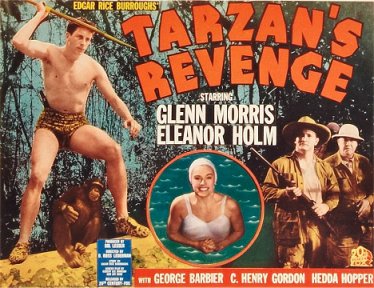
By Quentin N. Castle
With photos from the ERBzine Archive


In 1938 something different in the world of Tarzan hit the screen. Many who have reviewed this film in the following years have relegated this movie to the realms of an inferior jungle flick, but I believe that this movie is something very different from the other Tarzan films of its time and is in fact very modern in its presentation. Tarzan's Revenge leaped onto the screen at a time when Tarzan's cinematic popularity was at a high. Tarzan had been a mainstay of the silent cinema since the box office success of Tarzan of the Apes in 1918 and by the 1930s the time was right for a "talkie" version. This came to be with the box office success of 1932's Tarzan the Apeman. MGM followed this with a further five movies until leaving the franchise to RKO and producer Sol Lesser. Sol Lesser, however, was no newcomer to Tarzan movies. In the early '30s when MGM believed they had the exclusive film rights to the Tarzan character, Sol Lesser claimed that he actually had the film rights to the Tarzan series, purchased from another independent producer in 1928. Graciously, for a fee, he allowed MGM to go ahead with their bigger budget production, and on the coat tails of its success, brought out his own movie Tarzan the Fearless (1933) starring Buster Crabbe in both a 12-part serial and feature film version which featured a chimp sidekick named Nkima. It was again in 1938, in a gap between MGM Tarzan releases, that Lesser brought out his next Tarzan production, this time a feature called Tarzanís Revenge.
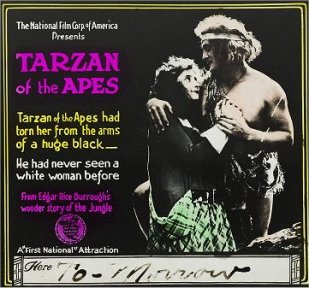 |
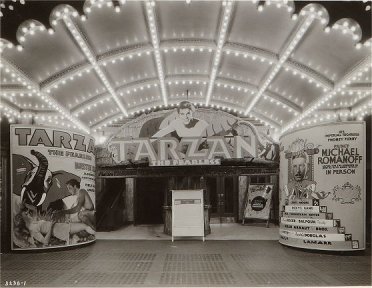 |
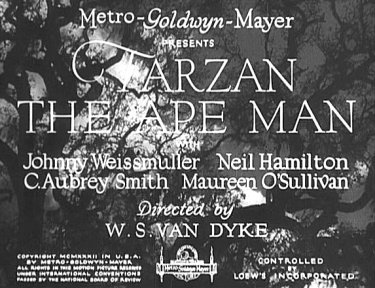 |
Part 2
In 1938, producer Sol Lesser bought out his next sojourn into the world of Tarzan, Tarzan's Revenge. One of the benefits of feeding off the success of the bigger budget MGM Tarzan films was that certain successful elements could be taken from that series and put into these lower budget films. Examples of this were the portrayal of Tarzan as a generally non-verbal character, and the inclusion of Cheetah, Tarzan's chimpanzee side kick who never appeared in the books of Burroughs, but who first appeared in Tarzan the Apeman (1932). Also included was Tarzan's distinctive yell which, although having its roots in the books, became embodied in the studio manufactured call featured in the MGM movies and forever after copied by school boys swinging on ropes into rivers. In both Tarzan the Fearless and Tarzan's Revenge, Tarzan is generally non-verbal, has an unnamed chimpanzee sidekick that viewers familiar with the MGM series assume is Cheetah, as well as a cry that is reminiscent of, though simpler than, the one featured in the MGM series. Although each has continuity outside of the MGM movies story line, both Tarzan the Fearless and Tarzan's Revenge fit well into MGM's conception of the character.This stands in contrast to Burroughs's own cinematic production of Tarzan, The New Adventures of Tarzan (1933). This 12-part serial featured a chimpanzee sidekick named Nkima, based on a monkey character in the novels, but Tarzan is presented as a well-spoken and educated English Lord. The Tarzan yell was taken from the Tarzan radio show, which was very different from the MGM version. In addition to this, the film featured a word from Burroughs's fictional ape language, "tarmangani" (white ape). If Burroughs sought to bring his character to the screen authentically, Lesser's version of Tarzan was designed to go with the cinematic flow created by the MGM talky Tarzan films that had proven so popular with the cinema going audience of the 1930s. Since the MGM movies featured the Olympian Johnny Weissmuller as Tarzan, Lesser's Tarzan's Revenge, in traditional showman style, would present not one but two Olympic gold medallists. Decathlete Glenn Morris took on the Tarzan role and swimmer Eleanor Holm starred, not as Jane, but as Eleanor. Lesser believed that Eleanor Holm was so well known by the public that they would never accept her as anyone else but Eleanor. When writing this over seventy years later, this seems ironic because my knowledge of Eleanor Holm comes not from her Olympic achievements, but from her portrayal as Tarzan's mate. Lesser surrounded the two inexperienced leads with a very experienced and professional back-up team. He hired capable B movie director David Ross Lederman, an experienced cast of character actors, Oscar-winning film editor Gene Milford, and a Robert Lee Johnson script that doesn't take itself too seriously. He commissioned a romantic and energetic score made up of original and stock music.
Part 3
When producer Sol Lesser brought out his follow-up to Tarzan the Fearless (1933), the new project, Tarzan's Revenge (1937) was in many ways a remake of MGM's Tarzan the Apeman, itself a loose adaption of the original Tarzan novel, Tarzan of the Apes (1912) that was first adapted for the screen in 1918. The basic stories of the two films are similar, a father, a daughter and her potential love interest enter the African jungle in search fortune and glory. They come across Tarzan who rescues the daughter and her family from various jungle perils. In the process of this, the potential love interest becomes jealous of Tarzan and tries to protect the girl from the wild man, to whom she is increasing attracted. After one final rescue from a hostile force in the jungle, the girl stays with Tarzan in the jungle, while the main romantic rival and any other survivors of the party return to civilisation with their primary mission accomplished. Aside from these basic narrative similarities some of which can be found in the original novel, these two movies are vastly different in tone, the latter reflecting the general shift of the MGM productions away from adult movies to a more family oriented affair.Tarzan the Apeman is a film that is quite grim in many aspects. We see Jane (Maureen O'Sullivan) come to Africa from England to join her father, James Parker (C Aubrey Smith). Here she meets Harry Holt (Neil Hamilton), her father's partner, who is attracted to her and who could be the leading man if the story did not have another more masculine character waiting in the wings. She joins her father and Holt in an expedition to scale the mysterious Mutia Escarpment in an effort to find the legendary Elephant's Graveyard. Here they run foul of a tribe of pygmies/dwarfs and eventually come across Tarzan (Johnny Weissmuller), who is very taken with Jane and saves her from the pygmy attack. Eventually Parker and Holt find Jane, one of Tarzan's ape friends is shot and killed, and Tarzan is injured by Holt. To make things worse, Jane, her father, Holt and their party are captured by the pygmies and thrown into a pit containing a hideous vicious gorilla. However, Tarzan saves the day and rescues the three white protagonists, the remaining native bearers having perished at the hands of the gorilla. Now Tarzan, Holt, Jane, and her mortally wounded father finally arrive at the elephants' burial ground in time for James Parker to see the treasure he'd travelled so far to find. Fittingly, this old man of the jungle passes away in the Elephants' Graveyard, joining the other jungle dead. Soon Holt is heading back to civilisation with his treasure of ivory and Jane is staying with Tarzan.
In many ways Tarzan the Apeman is a tragic story. Although the romantic leads survive, much pain is experienced along the way. Jane comes to the jungle seeking to be reunited with her father, only to lose him. James Parker climbs the Mutia escarpment to find a new life, but discovers only death. Holt seeks to win Jane's affections by protecting her, but manages to push her away even further into the arms of Tarzan. Tarzan is injured by Holt and loses a member of his ape tribe. The seemingly expendable native bearers all meet horrible ends in various ways. No one is left untouched by tragedy and sadness. Nevertheless, in the end Jane finds family in the arms of Tarzan and Holt heads off to organise the recovery of the ivory, which brings a note of hope for the future of all the surviving characters.
In stark contrast to this film is Tarzan's Revenge. Here the tone of the movie is completely different. Instead of a lonely Jane coming to Africa seeking family, this movie has Eleanor Reed (Eleanor Holm) coming to Africa with her family, father Roger, mother Penny (Tarzan's first mother-in-law), fiancé Neville and their man servant Jigger (Corbet Morris). It is a holiday/expedition by a wealthy American family seeking to capture rare animals to take back to America for a zoo. The mood is light and fun, with much of the dialogue full of light comedic banter, as the various family members involve themselves in games of verbal one-upmanship. The performances by the Reed family are comedic, even Eleanor's, as they trek through the wilds of Africa like fish out of water. They are not the hardened explorers of Apeman, but tourists continually walking inadvertently into danger, nearly causing elephant stampedes, stealing lion cubs while attracting the attention of the mother lioness, and falling for tales of imaginary 'white crocodiles'. They even manage to upset the local jungle sheik, Ben Alleu Bey (C. Henry Gordon) on the boat before even setting foot in the jungle. It is this latter event that causes the sheik to notice Eleanor and begin to hatch a plan to make her part of his harem.
Eleanor first comes across Tarzan (Glenn Morris) when she falls into a marsh while walking through the jungle with Nevin. In a funny turn of events, Nevin goes for help, Tarzan pulls Eleanor out of the marsh only to push her back in after a shoulder slapping match that ensues when she objects to him quizzically touching the mud on her leg. It's a farcical moment that is a far cry from the more brutal kidnapping and inspection that Jane initially receives at the hands of Weissmuller's Tarzan. In Morris' Tarzan we see the gentle jungle joker that Weissmuller's Tarzan would eventually evolve into as his series progressed into more family-oriented fare.
One recurring gag in Revenge is the idea held by Eleanor's family, that Tarzan is a figment of Eleanor's imagination. For much of the film they are unaware that Tarzan is watching over them and frustrating their efforts to capture and keep wild game. It's after he releases the captured animals that they realise the truth of his existence. Nevin decides Tarzan needs dealing with and Eleanor begins her romance with him, as Tarzan carries her off into the jungle for some tree top cuddling and a spot of swimming.
Secretly leading the safari toward the palace of Ben Alleu Bey is Olaf (Joe Sawyer), the Reed's jungle guide, who has been employed by the villain to deliver Eleanor into his hands and into his harem. This he does successfully. In Apeman the final peril that galvanises Tarzan as the hero to the safari comes from a threat that is totally alien and savage -- pygmies that kidnap and offer their victims into the lethal arms of a hideous wild beast. The threat in Revenge has followed and lured them into the jungle, is surrounded by luxury, and instead of offering its captives to a wild animal, puts on what is probably the first dance number in a Tarzan movie.
As in Apeman, Cheetah, having witnessed the kidnapping of Eleanor, informs Tarzan, who then comes to the rescue, saving the safari from Ben Alleu Bey's men and storms the palace. It must be said that between the two Tarzans, Weissmuller has the greater screen presence and acting ability. Morris, however, looks the part and his Tarzan truly comes to life in the action scenes. One of the best examples is when Tarzan runs into the court of the sheik, picks Eleanor up under his arm with seemingly effortless ease and runs out with her. Unlike Weissmuller, with his horde of elephants and bigger budget, Morris' Tarzan saves the day single-handedly, cutting the rope bridge from Ben Alleu Bey's palace to ensure his and Eleanor's escape.
The finale of Revenge sees Eleanor's family intact, mother-approved fiance and all, leaving Africa with their load of captured animals. As it was with Holt in Apeman, it is clear that Eleanor has chosen Tarzan over Nevin and intends to stay in the jungle with him. Now Nevin, spurred on by Eleanor's mother, finally takes a shot at Tarzan, only to be quickly overcome by the apeman. Eleanor is leaving her family to be with Tarzan, not because there are none left, but because she chooses to, and if not with her mother's blessing, her father's. The tragic and serious approach of Apeman is eschewed, dance number and all, toward a more light and comedic approach in Revenge. The journey into the mysterious escarpment populated by brutal natives who seek to destroy all outsiders is exchanged for a family safari into the jungle populated ultimately by another group of people that want to make Eleanor a part of their family, whether she likes it or not.
The approach of Tarzan's Revenge is similar to many modern action films that take a tongue-in-cheek approach to action adventure. The seriousness of the threat and the action is tempered by ongoing comedy amongst the main protagonists. Later films of the of the MGM series pick up on the family element of Revenge, and with the introduction of Boy, the more adult elements of the series disappear in favour of a more family oriented approach. However, the tongue-in-cheek approach of Revenge wouldn't be seen again in the series until Tarzan in Manhattan (1989). That much later film tries to reintroduce Tarzan to a modern television audience and takes stylistic cues from the successful Crocodile Dundee film series.
Although heavily influenced by the MGM series, Sol Lesser's second low budget foray into the world of ERB's apeman, Tarzan's Revenge, is a movie that has a distinct voice of its own and prefigures some of the directions the main series would take in the coming years. Although in some ways it is an inferior and smaller movie to the cinema classics of the early MGM series, it is a full of fun, 'feel good' film that is light and entertaining, presenting a more family-oriented Tarzan.
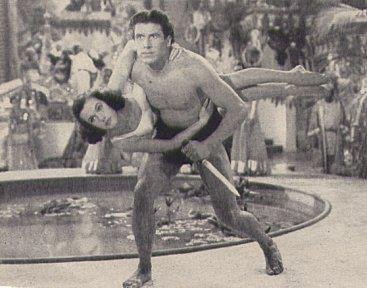 |
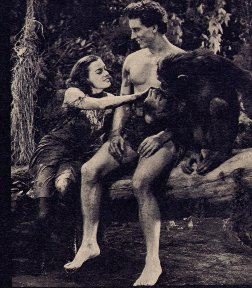 |
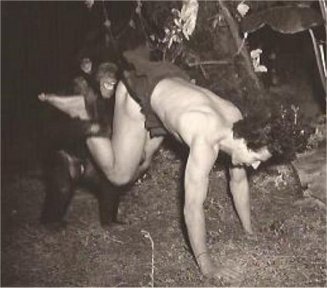 |
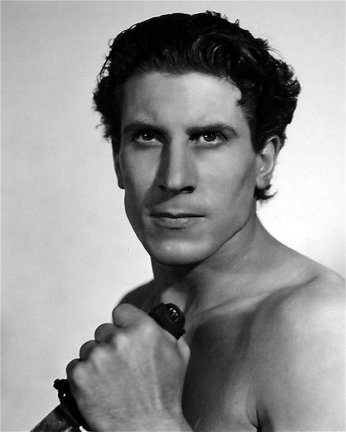 |
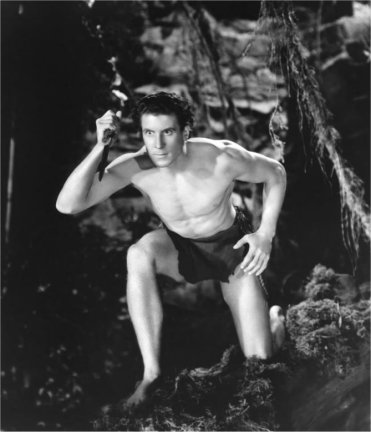 |
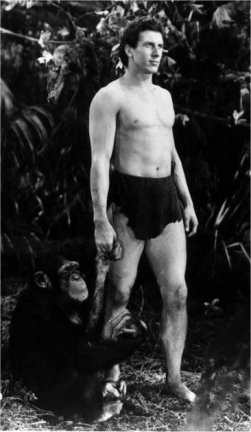 |
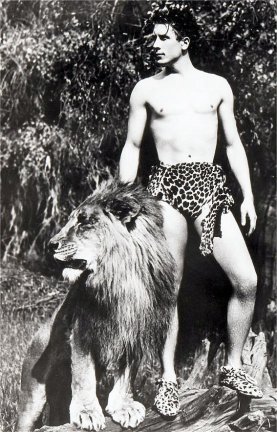 |
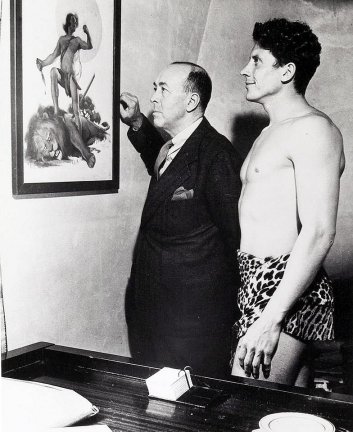 |
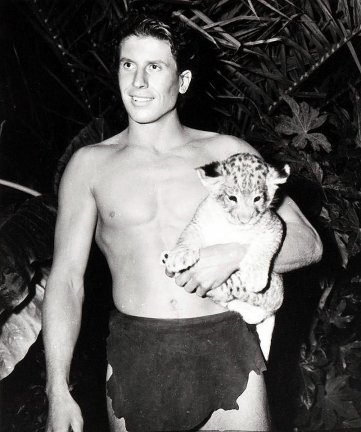 |
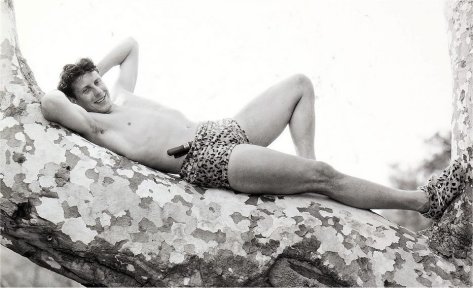
ERBzine Silver
Screen Series
Tarzan's Revenge
THE FILM
www.erbzine.com/mag6/0619.html
LOBBY DISPLAY
www.erbzine.com/mag6/0619a.html
Tarzan of the Apes
Tarzan the Fearless
The New Adventures
of Tarzan
Tarzan the Ape Man
![]()
![]()
![]()
![]()

![]()
BILL
HILLMAN
Visit
our thousands of other sites at:
BILL
and SUE-ON HILLMAN ECLECTIC STUDIO
ERB
Text, ERB Images and Tarzan® are ©Edgar Rice Burroughs, Inc.-
All Rights Reserved.
All
Original Work ©1996-2013/2015 by Bill Hillman and/or Contributing
Authors/Owners
No
part of this web site may be reproduced without permission from the respective
owners.